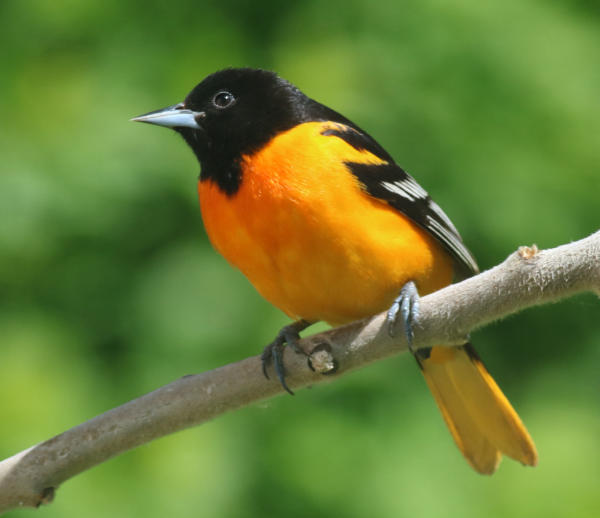
A male Baltimore Oriole was observed near Salt Lake City, far west of its normal range.
|
Excited birders discovered a first record for Ontario – a young Reddish Egret in Oliphant on the shore of Lake Huron. Continuing with Canada’s rare birds, a pelagic trip out of Jeddore, Nova Scotia, found a Yellow-nosed Albatross.
Cross-continent in British Columbia, a Brown Booby was recorded near Malcolm Island (adjacent to Vancouver Island). As Brown Boobies continue to be found offshore, the most exciting find was far inland in the state of Oklahoma, where birders are enjoying a Brown Booby near the town of Dover! Another inland Brown Booby was found at Onota Lake in western Massachusetts.
Also in Massachusetts, a Common Ringed Plover was found at Monomoy National Wildlife Refuge on the Cape, which is only the state’s fifth state record for this Old World shorebird. And the state had a second record of a Bermuda Petrel observed offshore from a NOAA ship.
Continuing the pelagic theme, a Trindade Petrel, a species that is most common far offshore of Brazil, was photographed in New York by birders on a pelagic trip out of Brooklyn. To complete this week’s seabird line-up, a pelagic trip out of San Diego, California, sighted two more Red-footed Boobies and a Craveri’s Murrelet.
Far inland again, a notable sighting for Utah birders was a male Baltimore Oriole that turned up near Salt Lake City, and a Blue-headed Vireo was photographed near Billings, Montana. Plus, Illinois became the latest state to host a Roseate Spoonbill; this spoonbill is being monitored near Rend Lake in south-central Illinois.
Astute birders found an Olive-sided Flycatcher in Greenville, South Carolina, in the northwestern part of the state. In North Carolina, birders found a rare Curlew Sandpiper on Ocracoke Island. This is the second sighting of a Curlew Sandpiper in two weeks; the first of the season for this species that nests in Arctic Siberia was identified in coastal Georgia.
It should also be noted that two very rare birds that were reported earlier are continuing to be seen: The Zenaida Dove is still being seen in the Miami area of south Florida, and a Little Egret continues to fly back and forth between Rhode Island and Connecticut.
It’s amazing to find out what rare birds appear across North America each week! What will American and Canadian birders find next week?
For more information, see the American Birding Association’s Rare Bird Alert at http://blog.aba.org/2018/08/rare-bird-alert-august-3-2018.html
You can also often find more information about individual rare bird sightings from the state rare bird alert listserves, which you can access at http://birding.aba.org/